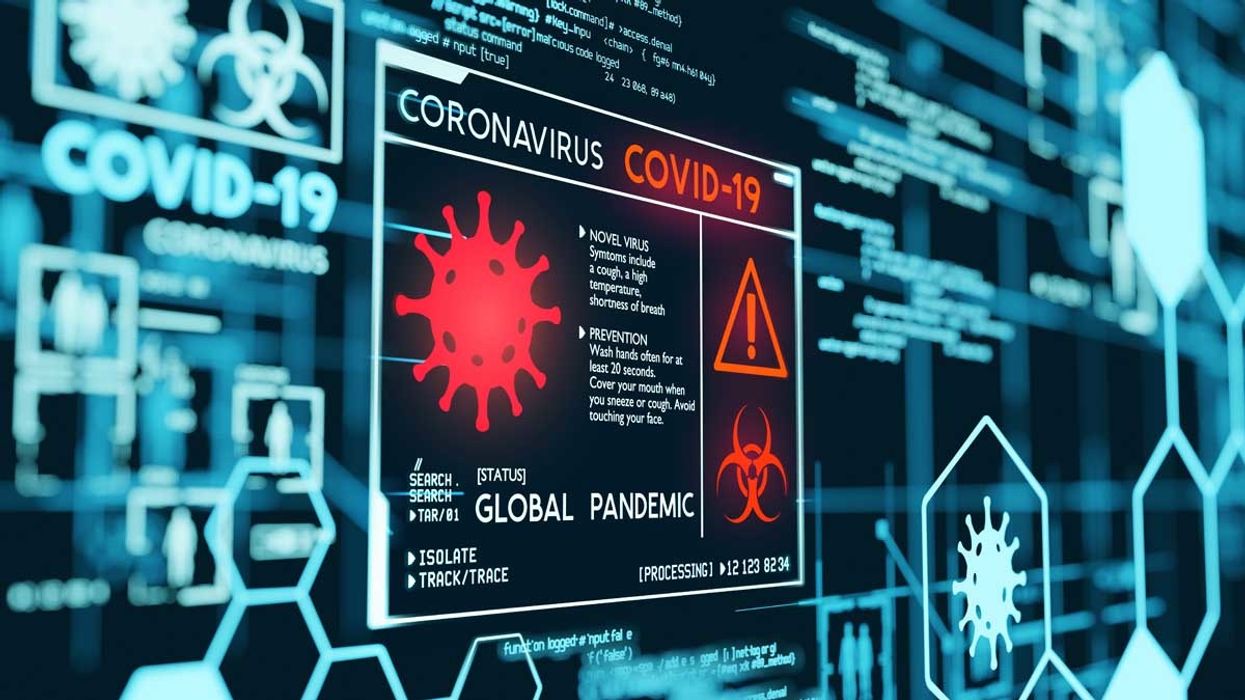
solarseven/Getty Images

These numbers are controlling our lives
In George Washington's republic, the contours of fundamental rights and the scope of governmental authority were defined by natural law and the Constitution. In Anthony Fauci's new America, those rights and powers are defined by coronavirus case and hospitalization data. As such, if hospitalizations are to be the new Constitution, shouldn't we at least demand answers about misleading data being used to impose an authoritarian and deleterious lifestyle on us?
Putting aside the fact that these lockdown measures don't work to stop the spread of the virus, are we even measuring the spread properly? In addition to governors failing to provide historical context to the current hospital levels compared to flu seasons, there are several other recent factors inflating the numbers.
To begin with, as a nation, we have decided to treat this virus in the hospital much more than any other virus. Congress has thrown billions of dollars at the hospitals, and they receive higher reimbursement rates for treating COVID-19 patients. However, many of the cases are not necessarily clinical level. Undoubtedly, in the worst cases, patients are critically ill, but the panic surrounding this virus creates a self-fulfilling prophecy of more people coming to the ER and being admitted. The financial incentives for hospitals certainly exacerbate this trend.
One particular change in policy that might be responsible for some of the inflation since October is the fact that they are now including those admitted to "observation" beds in the COVID hospitalization count. On Oct. 6, HHS updated its guidance for hospital data reporting. When reporting "total hospitalized adult suspected or confirmed positive COVID patients," they added a clause, not included in previous guidance, urging hospitals to "include those in observation beds."
In case you thought this was just technical advice to hospitals, the Centers for Medicare and Medicaid Services sent a letter to hospitals in October threatening harsh penalties for those who don't report this data. "Failure to report the specified data needed to support broader surveillance of COVID-19 may lead to the imposition of the remedy to terminate a provider's participation from the Medicare and Medicaid programs," warned CMS in a memo to all hospitals that serve Medicare and Medicaid patients.
Thus, if you combine the carrot and the stick — both the financial incentive to pad the COVID numbers and the threat of loss of funds for not reporting them — why would a hospital ever err on the side of underreporting and not overreporting? Remember, these incentives are driving the data reporting, which in turn is controlling the destiny of our lives.
Another reason why a lot of COVID patients who are largely sub-clinical are being admitted to the hospital is because of the use of remdesivir. I've previously written on how this drug was proven to be completely ineffective by a massive study conducted by the World Health Organization. Nonetheless, it is the only FDA-approved drug for COVID-19 treatment, and in order to obtain it, one needs to be hospitalized for at least three days. As A.J. Kay, writer at RationalGround.com observes, because CMS waived the requirement for hospitals to produce a utilization review plan for this drug (because remdesivir is king), it necessitated hospital admission.
The approval of this drug took place on Oct. 22, which would also explain the recent surge in hospital numbers. It would also explain why ICU admissions don't seem to be rising commensurate to the hospital admissions.
Clearly, there are many people being admitted who don't necessarily need to be there.
North Dakota and Iowa are the only states that distinguish those who are hospitalized because of COVID-19 from those hospitalized because of other ailments or injuries and just happen to test positive. Based on those numbers, I estimated that between 25% and 30% of the hospitalizations are really counting those admitted for other conditions who happen to have asymptomatic or mild cases of the virus, which are detected by universal testing in hospitals. But a new report from the Miami Herald suggest that in some states that number might be much higher.
On Wednesday, the Herald reported that out of 898 patients who tested positive in Miami's public hospitals last week, 52% of them "were admitted for other reasons, largely to emergency rooms, without typical COVID-19 signs." In other words, more than half of those who are now recorded as COVID hospitalizations are really admitted for anything from car accidents and broken bones to heart attacks, kidney stones, and abdominal pain. That is simply astounding.
The Herald uses this fact to sow more panic by suggesting that it is a sign of growing spread. Well, no kidding. This virus is everywhere and is as prolific as the flu is during flu season. But that's the point. Everyone is going to be exposed to this virus, and only a tiny percentage become sick enough to legitimately be hospitalized from it. However, during a period of ubiquitous spread, a large percentage of those in the hospital will test positive or even contract it after entering the hospital. Imagine if we counted everyone in the hospital during flu season as a flu case, even if they were asymptomatic and admitted for other reasons.
The irony is lost on the media and politicians that the overwhelming majority of cases are very mild or asymptomatic, but by panicking over the virus and treating every case like Stage 4 cancer, we are creating a self-fulfilling prophecy of straining hospitals with both illusory numbers and logistical problems with overaggressive quarantining of patients and staff.
Just remember these are the numbers that are being used to determine our ability to school our children, open our businesses, enjoy fresh air or entertainment, or even get together on Thanksgiving.
Daniel Horowitz
Blaze Podcast Host